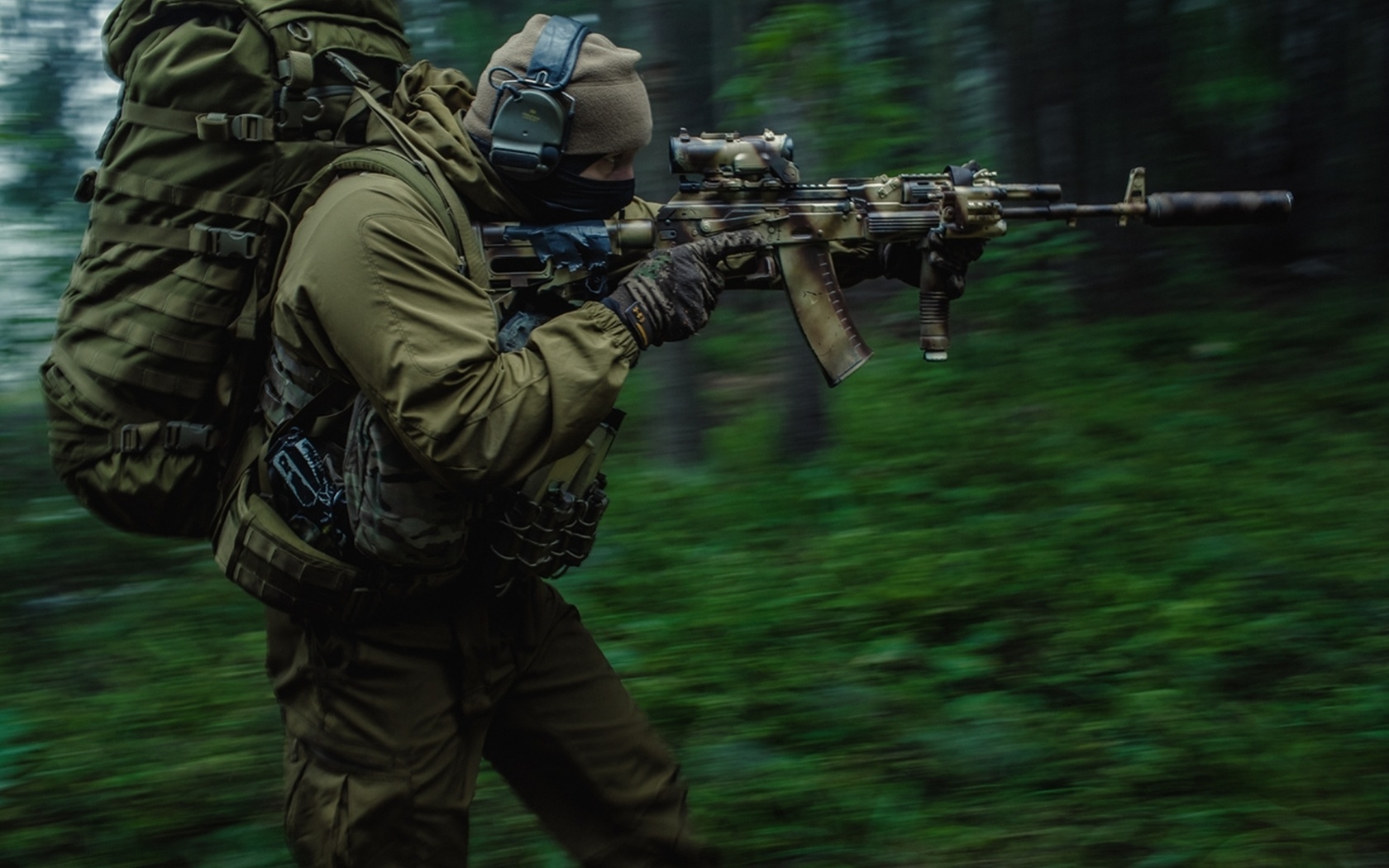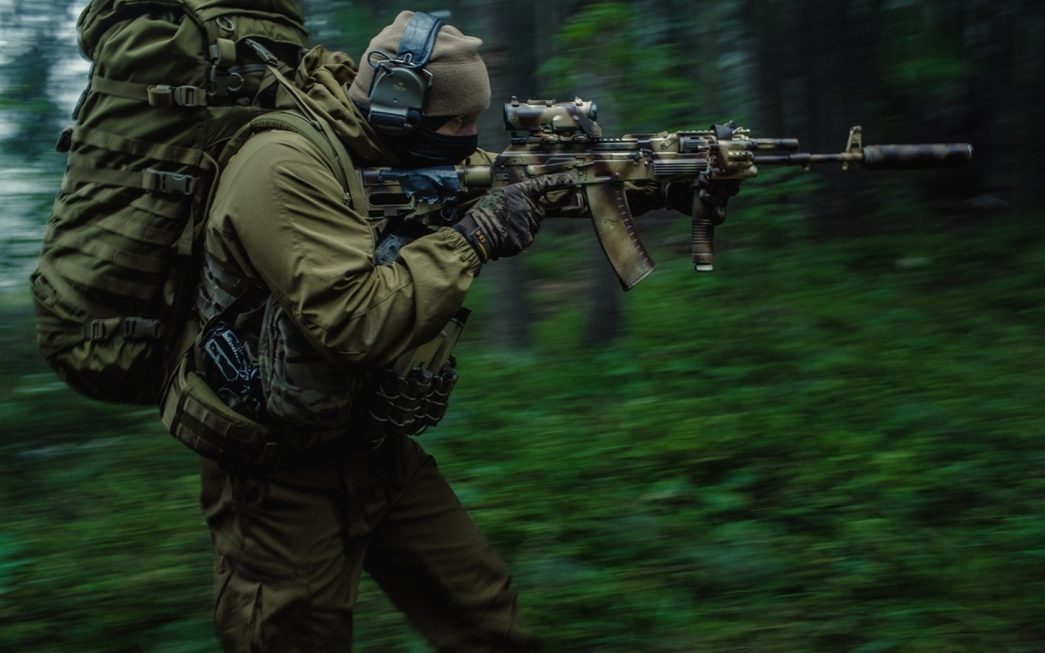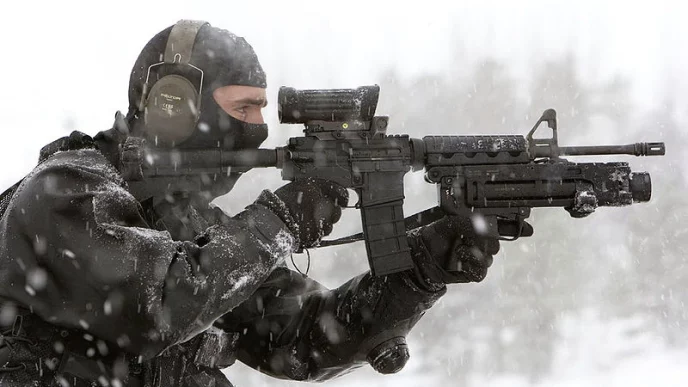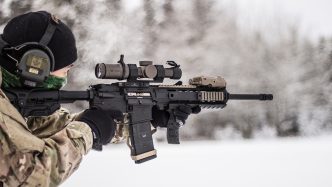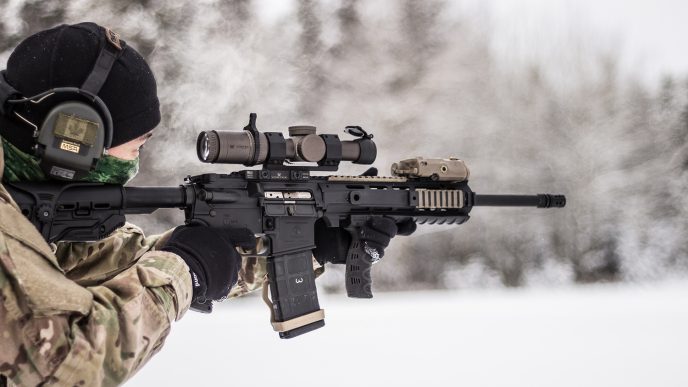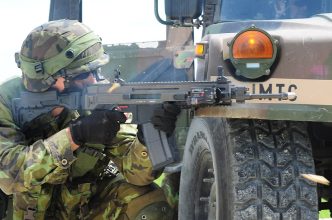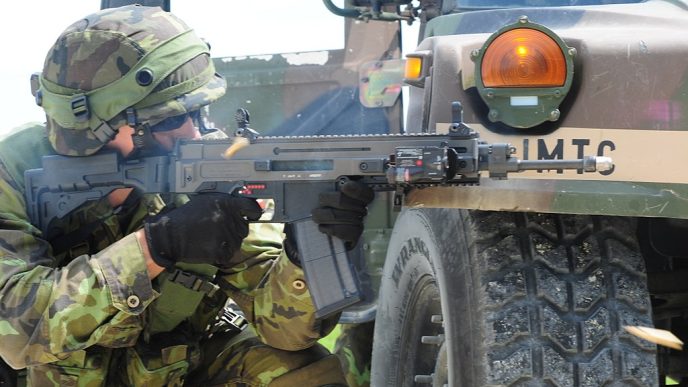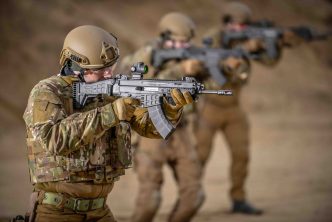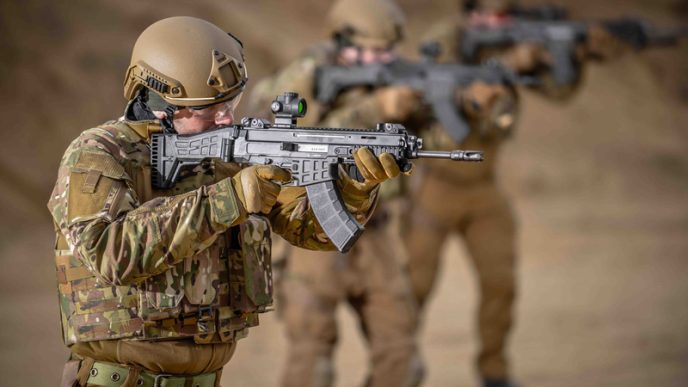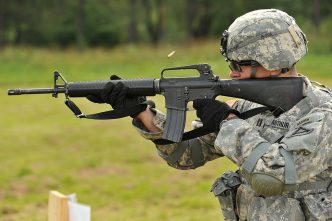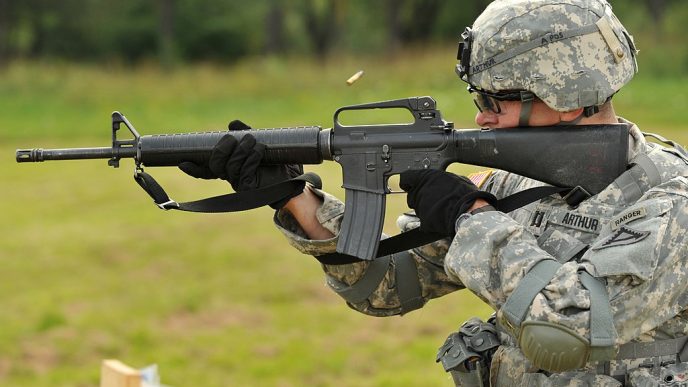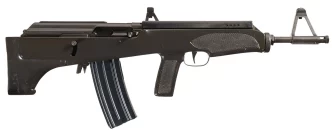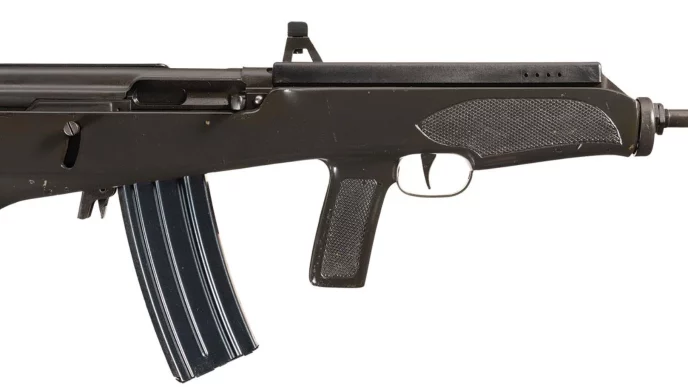The AKM is a Soviet-designed 7.62mm automatic rifle created by Mikhail Kalashnikov. It is an upgraded version of the AK-47 rifle, which was developed during the 1950s. The Soviet Red Army adopted the AKM in 1959, and it is one of the most produced versions of the AK family. The AK-74 officially replaced the rifle in the Soviet Army in the late 1970s, but it continued to be widely used worldwide. Many Soviet-made weapons identified as AK-47s are AKM or copies made by other countries.
Introduction
In the mid-1950s, the Soviet Army issued new requirements for a lighter, more accurate assault rifle than the AK-47. A squad automatic weapon also complemented these requirements. Mikhail Kalashnikov responded to these requirements with a new version of the AK-47 with minor improvements. The improved rifle was adopted by the Soviet Army in 1959 as the AKM, along with the RPK light machine gun.
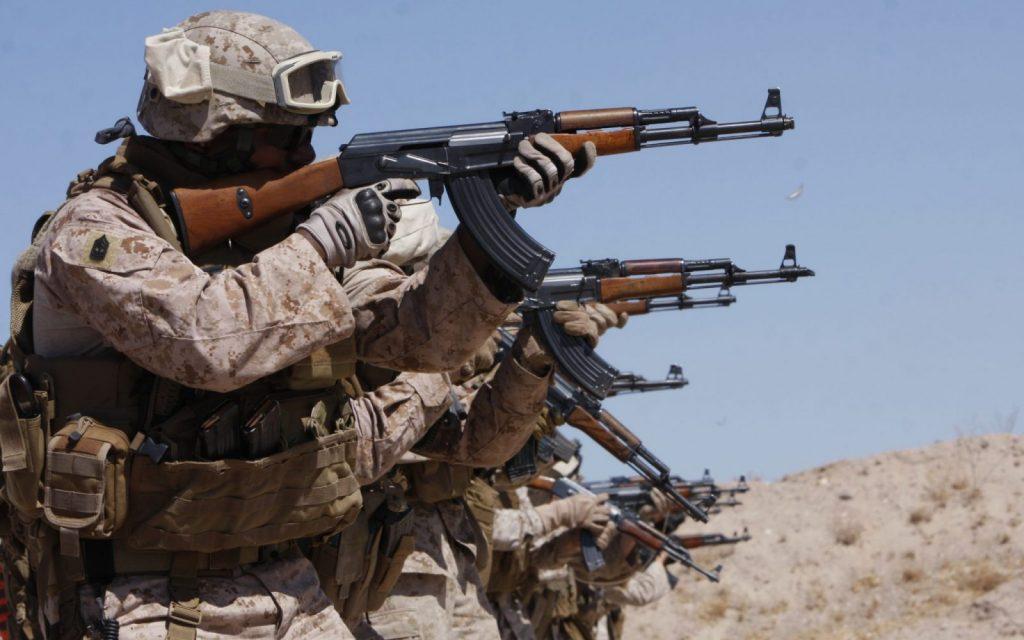
The AKM was the standard-issue infantry weapon until 1974. By 1985, all AKM assault rifles were replaced in service with the new AK-74. In addition to the USSR, the rifle was widely used in member states of the Warsaw Pact and Asian, African, and Middle Eastern countries. In addition to being produced in the USSR (IŽMAS, Tula Arsenal), the rifle was largely produced in other countries that were Soviet allies. The AKM is currently in service with at least 35 countries worldwide.
Design
The AKM is a gas-operated, selective-fire weapon designed with the Soviet 7.62×39 mm intermediate cartridge. Its improved manufacturing methods and utilization of plastics have resulted in a 700g reduction in weight compared to the original AK-47. Additionally, a hammer release delay mechanism has slightly improved its firing accuracy.
This weapon offers automatic and semi-automatic firing modes, with a maximum capacity of 600 rounds per minute. Although the AK-74 replaced it in the late 1970s, the AKM is still used today as a backup weapon in Russia and various countries where it has been exported or produced.
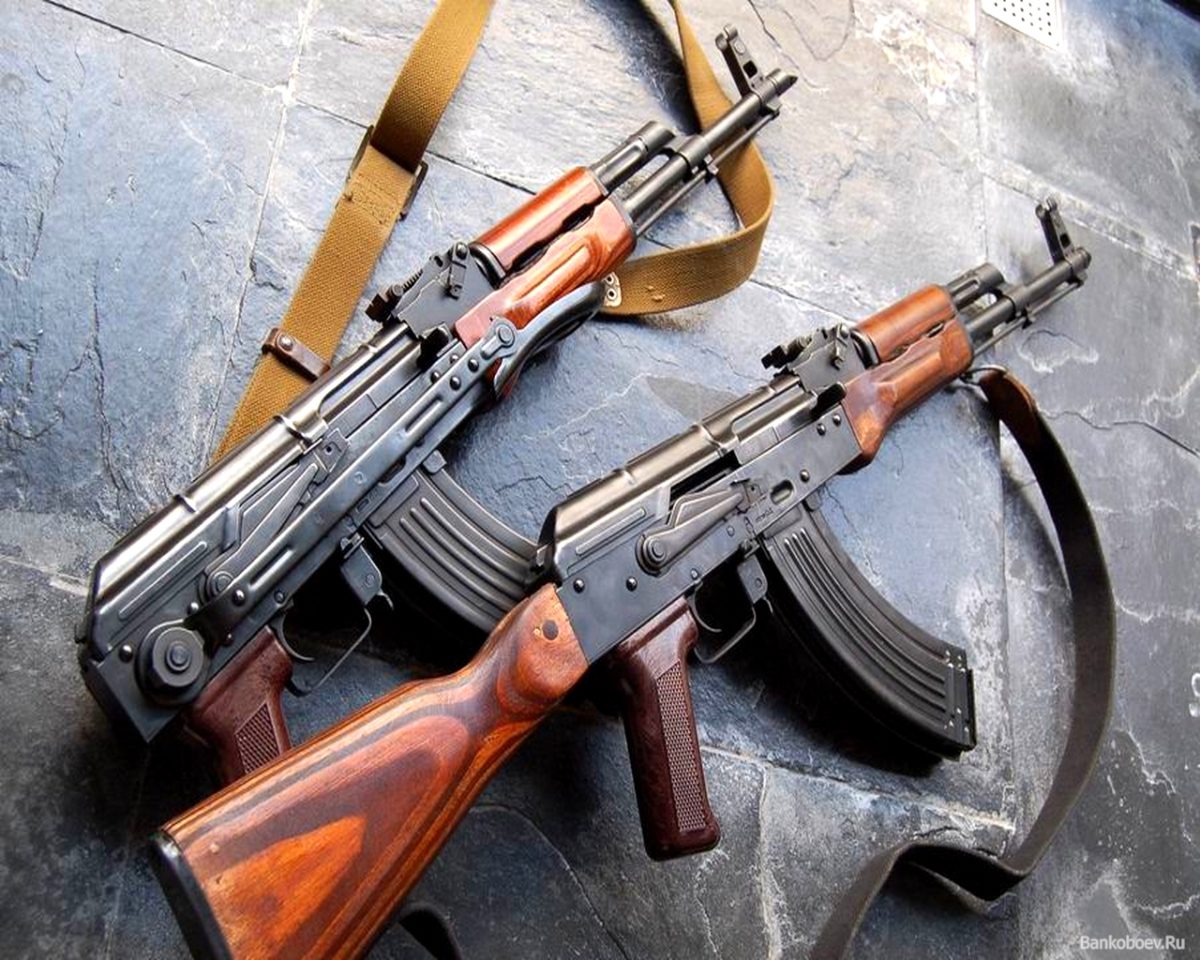
While the AKM may have inferior accuracy compared to many Western assault or automatic rifles, it has gained a reputation for its unparalleled reliability, robustness, ease of operation, and maintenance. This weapon is known to function without jamming or misfiring even in the harshest conditions and can reliably extract rounds even with a dirty chamber or cases. It can be field-stripped in one minute without using any tools, and its simple design makes it suitable for mass production. However, it has poor ergonomics and is poorly balanced.
The weapon features a combined safety and fire mode selector switch that locks the bolt group and trigger in the “safe” position, serving as a dust cover. The middle position is for automatic fire, and the bottom position is for single shots.
The AKM is fed using a 30-round box magazine. Later production models featured distinctive red plastic magazines. This assault rifle is compatible with magazines from the AK-47, 40-round box magazines, and 75-round drum magazines from the RPK light machine gun.
This assault rifle’s sighting range can be adjusted from 100 to 1,000 meters. However, it is considered overly optimistic, as the effective range of fire is limited to 300-400 meters. Despite this, the AKM can hit a running target of 500 meters. The original AK-47 had a sighting range of up to 800 meters and similar accuracy. It is believed that the increased sighting range was primarily intended to provide soldiers with greater confidence in their weapons.
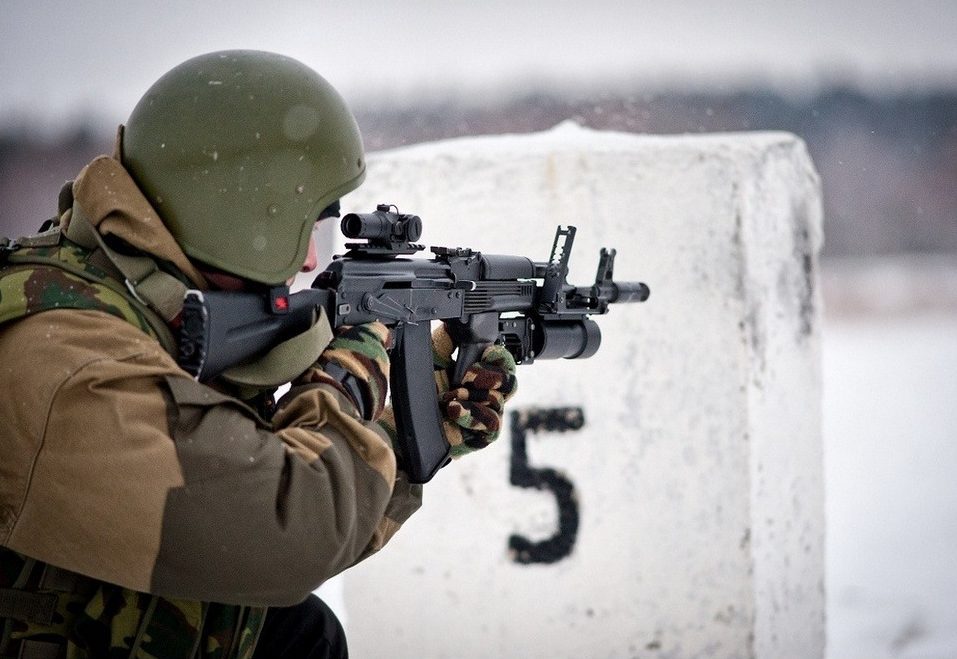
The AKM was produced with a solid wooden stock or an under-folding metal stock (AKMS); airborne troops commonly used the latter. Both versions feature a similar design, except for the buttstock. The AKMN and AKMSN versions are compatible with night vision sights.
A detachable multipurpose knife-bayonet of a new type can be attached to the AKM. This bayonet is typically issued alongside the assault rifle. A PBS-1 silencer was specially developed for this assault rifle, and Soviet special forces used silenced AKM. This silencer requires special sub-sonic ammunition. The AKM assault rifle can also mount a 40 mm GP-25 under-barrel grenade launcher.
In 1974, the Soviet Army adopted a new AK-74 assault rifle, chambered for 5.45×39 mm ammunition. Despite this, the AKM was never completely removed from service and is still used by the Russian Army. Veterans claim that the AK-47 and AKM, chambered for the powerful 7.62×39 mm rounds, are superior to the AK-74 in urban and forest battles, where the trajectory of the small-caliber 5.45x39mm bullet can be heavily affected by even leaves. In urban battles, the 7.62 mm bullets have less tendency to ricochet, unlike the lighter 5.45 mm bullets.
Variants
AKMS
The main version of the AKM is the AKMS, which features a built-in folding metal stock in place of the standard wooden one. The metal stock is slightly different compared to the previous AKS-47 model. It was adopted in 1959 or 1962, depending on the source, and replaced the previous AKS (AKS-47) in production.
Based on the AKM, several other models were developed, such as the AKMP, AKML, and AKMLP. These versions are specifically designed for paratroopers as the collapsible stock creates extra space for other military equipment when jumping out of planes and landing.
The AKMN is a “Night” version that features a universal side mount for night vision sights. It is used with NSP-2, NSP-3, and NSPU night sights.
The AKMSU is a compact assault rifle with a wooden foregrip and a thumb hole. The current status of this weapon is unclear, as there is no evidence that it was produced in large quantities.
The AKMSN is a version that features an under-folding metal stock and side mount for night vision sights.
RPK light machine gun
The RPK light machine gun is a heavy barrel version of the AKM, equipped with a bipod. It is fed using 40-round box magazines or 75-round drum magazines. It was primarily used as a squad support automatic weapon.
Licensed copies
Based on the AKM, Poland developed a modified version called the Karabinek-granatnik wz. 1974 which is capable of using the 40 mm Pallad grenade launcher of domestic production.

Other European countries also developed their versions of the AKM. Yugoslavia produced the Zastava M70, Hungary produced the AK-63, and Romania produced the PM md. 65 and Bulgaria produced their model. Egypt produced its model, the Misr, and China produced the Type 56 model on the African continent.
